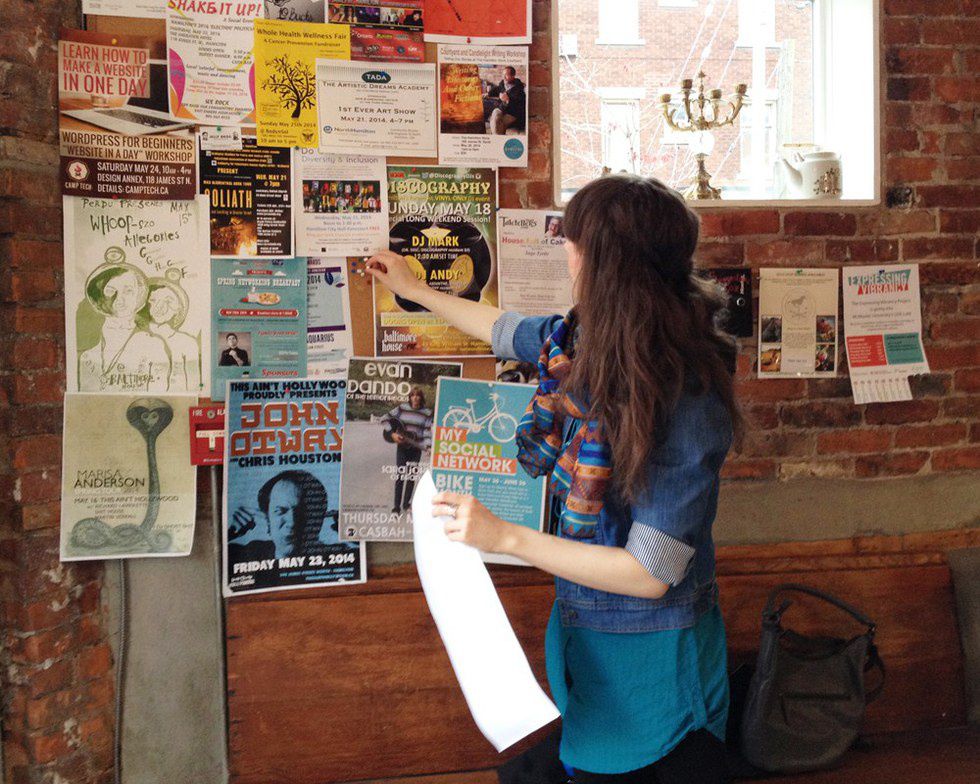May is an important month for almost everyone.
School is coming to a close, the days are getting longer and summer is just around the corner. It is also a month of awareness. Mental health, skin cancer, asthma, and arthritis all have their awareness month in May. Chances are you are someone or know someone who is affected by one of these. You've heard about them and most likely know the basics. May is also the awareness month for Ehlers-Danlos syndrome, probably something you've never heard of! This rare condition is underdiagnosed, misunderstood and unheard of to most of the world.
As someone with Ehlers-Danlos syndrome who spent years looking for a diagnosis, I know how important awareness and education is. Here is a list of everything you need to know about EDS and those who live with it.
1. Ehlers-Danlos Syndrome is a genetic disorder affecting the body's connective tissue
Good news: you can't "catch" EDS; Bad news: A) If you have it, you're stuck with it and B) it can cause a whole lot problems. EDS affects collagen production or structure. Collagen is a fibrous protein that is found throughout the body. It's basically the glue that holds everything together. People with EDS either have weak collagen or lack of properly structured collagen. This means that the main problems in EDS arise from the muscles, bones, blood vessels and skin. However, nearly every body system is or can be affected by Ehlers-Danlos Syndrome in some way.
2. There are 13 subtypes of Ehlers Danlos Syndrome
Hypermobile, classical and vascular types are the most common forms of EDS. All forms of EDS have symptoms in common but they can vary immensely. Some forms are extremely rare. Dermatosparaxis EDS has only been identified in 12 people!
3. Mutations in one of over dozen genes can cause Ehlers-Danlos Syndrome
All types of EDS except for hEDS have an identified basis. However, there are many genes that can cause a problem within collagen or its production. Mutations in COL5A1, COL5A2, COL3A1, COL1A1, TNXB, COL1A2, PLOD1, PRDM5, COL12A1 and more al cause forms of EDS. I'm sure the last sentence looks like alphabet soup to nearly everyone but I swear they all mean something!
4. People with EDS are commonly misdiagnosed or dismissed completely
Many people with EDS are told they are hypochondriacs, have depression and anxiety or are simply overreacting. This can lead to years of pain, self-doubt, frustration. Awareness and advocacy are extremely important to the EDS community because of this.
5. The three hallmarks of EDS are hypermobility, skin extensibility, and tissue fragility
While these three are seen in almost all Ehlers-Danlos patients, a whole host of other signs, symptoms and co-morbid conditions can occur. Almost all of the body systems are affected by EDS. So while we may just seem double-jointed, there are about 100 other things going on.
6. Ehlers-Danlos Syndrome can be accompanied by a multitude of co-morbid conditions
When you have EDS, you predisposed to developing or having a host of other medical problems. Thoracic outlet syndrome, scoliosis, Chiari malformation, POTS, gastroparesis, MCAD and valvular heart disease are just a few of the complications EDSers can face.
7. Ehlers-Danlos Syndrome is classified as a rare disease by the National Organization for Rare Diseases
However, due to the underdiagnosis of the condition, the true frequency of EDS is unknown. Hypermobile EDS is the most common with a rate ranging from 1 in 5,000 to 1 in 20,000. Rarer forms occur much less frequently with kEDS occurring in 60 people and aEDS occurring in 30.
8. People with Ehlers-Danlos almost always have chronic pain
It's just a fact that most people with EDS live with chronic pain that can be excruciating. Due to the condition, we are prone to dislocations, sprains, and subluxation of our joints. Coupled with the chronic muscle and joint pain caused by the syndrome and other co-morbid conditions, most of us are in pain all of the time. For example, in my relatively moderate case, I take four medications to manage my pain along with two "rescue" meds.
9. There is no cure for Ehlers-Danlos Syndrome
The only type of treatment for EDS is supportive. Doctors can help to deal with problems as they arise but there is no way to fix the actual cause. Physical therapy, pain management, surgery, bracing, and close monitoring help to manage symptoms and prevent serious complications from arising. We're basically putting band-aids on an open fire hydrant all of the time and hoping the water will just stop at some point.
10. The EDS mascot is a zebra
A common phrase in medicine is "When you hear hooves, think horses, not zebras". This means that the easiest explanation is most likely. They tell doctors to not go looking for something rare and wild when there's a simpler answer. However, us zebras do exist. There are those rare cases out there! We use the zebra as our mascot to show that rare diseases exist and that they warrant attention, awareness, and attention.
To learn about Ehlers-Danlos Syndrome, it's subtypes and current research/advocacy efforts check out: https://www.ehlers-danlos.com/



















